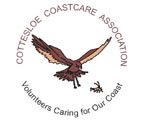Making Waves 2006
Sue and Frauke attended the Making Waves Symposium, which highlighted some of the Natural Resource Management projects and initiatives underway in our marine and coastal environments in WA. The day was organised as part of the National Heritage Trust and National Action Plan for Salinity and Water Quality programs.
Highlights
These presentations impressed us most, but there were many others!
Welcome
Richard Walleys’ mesmerizing rendition of whales and dolphins on the didgeridoo as part of the traditional “Welcome to Country”. It was spine tingling.
Marine Futures
The most stunning project and an excellent example for the collaborative approach typical of so many research initiatives presented at this Symposium. Based at the
The main objectives of the project are
- exemplary mapping of some 1000 square kilometres [of a staggering 60.000!] of WA’s ocean floor between Eucla and Kalbarri
- biodiversity assessments
- analysis of the impact human use has on the marine envrionment
to provide base line data for informed decisions on sustainable Natural Resource Management.
For us it was exciting to listen to the animated presenter and gawk at the latest technology of towed video surveys above the ocean floor in action. Keep yourself informed about this awe-inspiring venture by checking out its website: http://www.marinefutures.com.au/.
Monitor Fish Habitats at the
One of the attractive aspects of this Symposium was the participation of so many young scientists engaged in practical research with beneficial outcomes for the more informed and therefore [we hope] better management of our unique biodiversity. Using baited stereo-video systems [stereo BRUVs] to examine the different effects of fishing and protection on coral reef fishes at the above habitats, D.L. Watson and her team collected data which will enhance understanding of the diversity and structure of reef fish assemblages and assist sustainable management. It was a pleasure for us to watch this utilisation of modern technology with such tangible outcomes.
Movements and Habitats of Australian Sea Lions along WA’s Coast
Richard Campbell and his team [Dept of Fisheries] have used satellite geolocation instruments and time-depth recorders to map the astonishingly varied and wide-ranging movements and foraging behaviour of WA’s sea lions from four remaining breeding colonies. It is scary to realise that there are only 800 of this rare species left. This project has given us insights into until now unknown behaviour patterns and will assist in attempts to save the threatened colonies. One heartening immediate outcome is the mandatory modification of rock lobster fishery pots to prevent the drowning of young sea lions captured in them – a simple bolt attached to the bottom of the pots!
Ben Chuwen and his colleagues from
Beach Health Program
Karen Wheeler from the Department of Water spoke about the project to identify contaminants in stormwater that is discharged to recreational ocean beaches in the
[Text by Sue and Frauke, photo taken by Rob]


0 Comments:
Post a Comment
<< Home